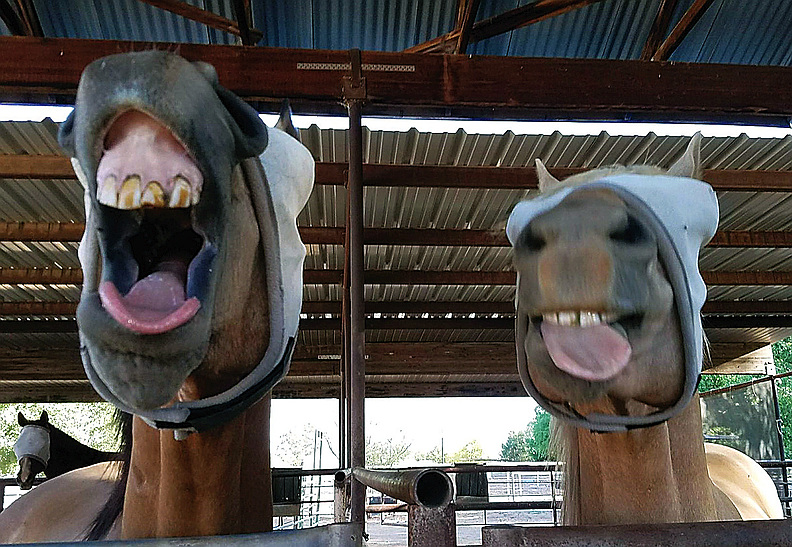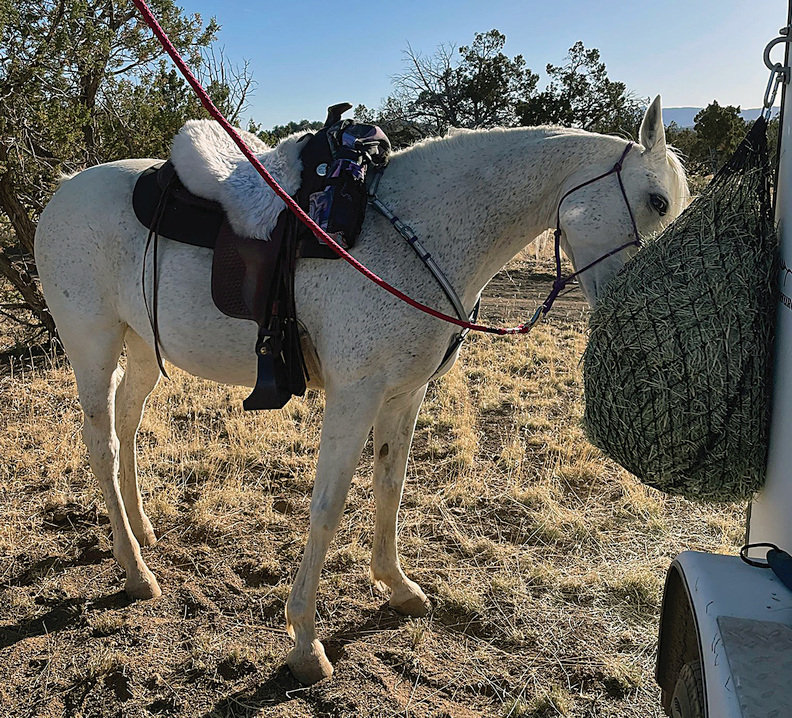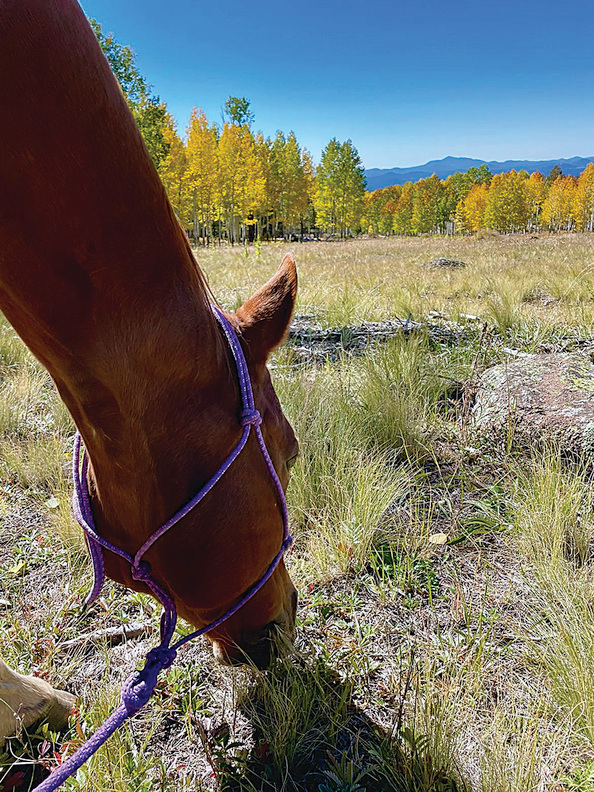By Rita Thompson-Tinsley

When it comes to your horse‘s health, you can‘t just think pony baloney. Nothing demonstrates better in the equine kitchen that ‘you are what you eat‘.
There are many choices to make when it comes to strategizing your horse‘s diet. You must take into consideration the type of horse you have, the size, and the activities or lack of.
According to Misa Dickinson, DVM, who has a vet practice in Chino Valley, “We definitely want the majority of our feed to be forage based.“ She recommends for those easy keepers, “You‘re going to want to stay away from the calorie-rich foods, feeding them less alfalfa, if any.“

She emphasizes that working horses who are ridden every day to the point of getting lathered are the ones that need extra calories, and recommends ‘graining‘ in these situations, keeping in mind that more than five pounds of grain is not a good idea. (Excessive grain can cause other issues such as gastric ulcers.)
Mares growing a foal or lactating have the highest nutrient needs out of all of horses. “Not only are they needing to feed themselves, they‘re needing to feed a growing foal. These mares need a lot of nutrients on board,“ says Dr. Dickinson.

Dickinson also addressed some misconceptions she hears about feeding. Many equine owners express suspicion regarding the effects of feeding their horse a specific hay, such as alfalfa versus bermuda grass hay. ‘Alfalfa makes my horse hot‘ is a typical comment.
“There is no bad hay, there are just different hays. Each hay has its own pros and cons.“ She explains that the amount of calories in the alfalfa is higher than the amount in Bermuda. However, “We have done some hay analysis where Bermuda has turned out to be higher in calories than the alfalfa,“ she admits. “It depends on where it‘s grown, soil content, fertilizer, how it‘s cut, where it‘s stored, how long it‘s stored.“
That‘s a lot to take into consideration. If the hay is cut when it‘s more mature, it has less nutritional value than if it‘s cut right away. “Early-cut hay,“ Dickinson stresses, “is going to be extremely high in nutrient, really dense and calorie-rich.“
Purina Livestock Production Specialist for Olsen‘s Grain, Rachel Lewis, has a philosophy for feeding. “Start with the end in mind.“ She recommends that you first evaluate your horse‘s lifestyle.


